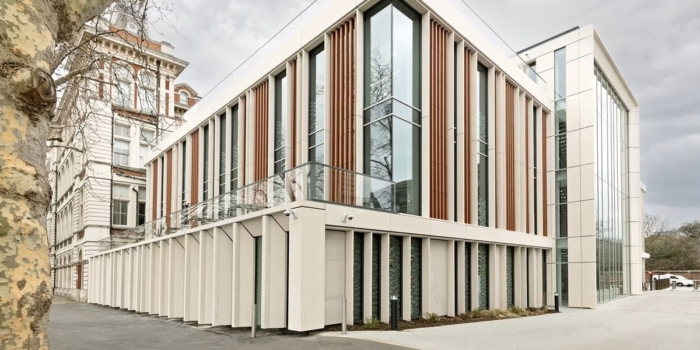 Theme: Collaborating with industry for teaching and learning, Universities’ and businesses’ shared role in regional development, Knowledge exchange, Graduate employability and recruitment
Theme: Collaborating with industry for teaching and learning, Universities’ and businesses’ shared role in regional development, Knowledge exchange, Graduate employability and recruitment
Authors: Prof Simon Barrans (University of Huddersfield), Harvey Kangley (Associated Utility Supplies Ltd), Greg Jones (University of Huddersfield) and Mark Newton (Associated Utility Supplies Ltd)
Keywords: Knowledge Transfer Partnership, Design and Innovation, Student Projects, Railway Infrastructure
Abstract: A six year collaboration between the University of Huddersfield and Associated Utility Supplies Ltd has resulted in one completed and one ongoing KTP project, two successfully completed First of a Kind projects for the rail industry and the development of a new design department in the company. Benefits to the University include, graduate and placement student employment, industrially relevant final year and masters projects and the application of University research. Continued collaboration will generate a case study for the next REF. In this paper we explore the various mechanisms that have been used to facilitate this work.
The opportunity
Network Rail felt that their current supply chain was vulnerable with many parts being single source, some from overseas. They addressed this issue by engaging with SMEs who could develop alternative products. A local company, AUS, believed they could tackle this challenge but needed to develop their design and analysis capability. Their collaboration with the University of Huddersfield enabled this.
Seed funded taster projects
In 2016 AUS approached regional development staff at the 3M Buckley Innovation Centre, the University‘s business and innovation centre, with two immediate needs. These were: an explanation as to why a cast iron ball swivel clamp had failed in service, and a feasibility study to determine if a cast iron cable clamp could be replaced with an aluminium equivalent. Both these small projects were funded using the University’s Collaborative Venture Fund, an internal funding scheme to deliver short feasibility projects for industry. This incentivises staff to only engage in collaborations where there is a high expectation of significant external future funding, and which are low risk to an industry partner.
Knowledge Transfer Partnership (KTP) Projects
KTPs are managed by Innovate UK and are one of the few Innovate UK grants that are designed to have a university as the lead organisation. They are particularly attractive to SMEs as Innovate UK funds 67% of the project cost. The costs cover: the employment costs for a graduate, known as the Associate, who typically works full time at the company; an academic supervisor who meets with the Associate for half a day a week; and administrative support. The key measure of success of a KTP project is that it leaves the company generating more profit and hence, paying more tax. Increased employment is also desirable.
The first, three-year KTP project, applied for in January 2017 and started in June 2017, aimed to provide the company with a design and analysis capability. A Mechanical Engineering graduate from Huddersfield was recruited as the Associate and the Solidworks package was introduced to the company. A product development procedure was put in place and a number of new products brought to market. The Associate’s outstanding performance was recognised in the KTP Best of the Best Awards 2020 and he has stayed with the company to lead the Product Innovation team.
The second, two-year KTP project started in November 2020 with the aim of expanding the company’s capability to use FRP materials. Whilst the company had some prior product experience in this area, they were not carrying out structural analysis of the products. FRP is seen as an attractive material for OLE structures as it is non-conductive (hence removing the need for insulators) and reduces mass (compared to steel) which reduces the size of foundations needed.
First of a kind (FOAK) projects
The Innovate UK FOAK scheme provides 100% funding to develop products at a high technology readiness level and bring them to market. They are targeted at particular industry areas and funding calls are opened a month to two months before they close. It is important therefore to be prepared to generate a bid before the call is made. FOAKs can and have been led by universities. In the cases here, the company was the lead as they could assemble the supply chain and route to market. The entire grant went to the company with the university engaged as a sub-contractor.
The first FAOK to support development of a new span-wire clamp was initially applied for in 2019 and was unsuccessful but judged to be fundable. A grant writing agency was employed to rewrite the bid and it was successful the following year. Comparing the two bids, re-emphasis of important points between sections of the application form and emphasising where the bid met the call requirements, appeared to be the biggest change.
The span-wire clamp is part of the head-span shown in figure 1. The proposal was to replace the existing cast iron, 30 component assembly with an aluminium bronze, 14 component equivalent, as shown in figure 2. The FOAK project was successful with the new clamp now approved for deployment by Network Rail.
The University contributed to the project by testing the load capacity of the clamps, assessing geometric tolerances in the cast parts and determining the impact that the new clamp would have on the pantograph-contact wire interface. This latter analysis used previous research work carried out by the University and will be an example to include in a future REF case study.
The second FOAK applied for in 2020 was for the development of a railway footbridge fabricated from pultruded FRP sections. This bid was developed jointly by the University and the company, alongside the resubmission of the span-wire FOAK bid. This bid was successful and the two projects were run in parallel. The footbridge was demonstrated at RailLive 2021.
Additional benefits to University of Huddersfield
In addition to the funding attracted, the collaboration has provided material for two MSc module assignments, six MSc individual projects and 12 undergraduate projects. The country of origin of students undertaking these projects include India, Sudan, Bangladesh, Egypt, Syria and Qatar. A number of these students intend to stay in the UK and their projects should put them in a good position to seek employment in the rail industry. A number of journal and conference papers based on the work are currently being prepared.

Figure 1. Head-span showing span-wires and span-wire clamp.

Figure 2. Old (left) and new (right) span-wire clamps.
Any views, thoughts, and opinions expressed herein are solely that of the author(s) and do not necessarily reflect the views, opinions, policies, or position of the Engineering Professors’ Council or the Toolkit sponsors and supporters.




